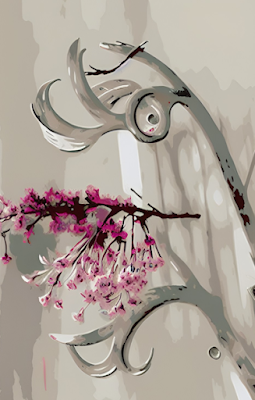Nevertheless, I found it valuable to investigate a little deeper and was impressed by this phenom who can pack stadiums and hold fans captive for three hour concerts and longer.
 |
| Click to enlarge. |
That's a pretty eye-opening achievement right there. But here's more.
Swift has won 12 Grammy Awards, including Album of the Year for Fearless (2008), 1989 (2015), and Folklore (2020). She's the most awarded woman in Grammy history and the second most awarded artist overall.
Like, wow. Like where have I been?
On top of this Swift has won 40 American Music Awards, the most of any artist in history. She has won in categories such as Artist of the Year, Favorite Female Artist – Pop/Rock, and Favorite Album – Pop/Rock.
OK, and what else?
Swift has also won 29 Billboard Music Awards, the most of any female artist. She has won in categories such as Top Artist, Top Female Artist, and Top Billboard 200 Album.
In addition to her awards and selling 200 million records worldwide, she has also been praised for her songwriting skills. She has been credited with revolutionizing the country music genre and bringing it to a wider audience. Her honesty and vulnerability in her lyrics have also contributed to her success.
To be frank, I've been somewhat out of touch with regards to Taylor Swift's career and her contributions to music and pop culture. What I do respect her for is her apparent stamina and character as demonstrated by more than two decades of being in the spotlight. There are countless others who have wilted under the heat of that focused beam.
So, why is Taylor Swift so popular?
 |
| 2023 Eras Tour (Creative Commons) |
Her ability to connect with her fans: Swift is known for her close relationship with her fans. She often interacts with them on social media and at her concerts, and she makes them feel like they are part of her inner circle.
Her image: Swift has a carefully crafted image that is both relatable and aspirational. She is seen as a down-to-earth girl who is also successful and glamorous. This image has helped her to appeal to a wide range of fans.
Her longevity: Swift has been in the music industry for over 20 years, and she has consistently released successful albums and singles. It may not be the half century we find in Sixties' legacy artists (McCartney, Dylan) but it's a longevity that has played a role in building a loyal fan base that has only grown over time.
The rise of social media: This is possibly one of the biggest factors in her success. We live in a celebrity culture. With the megaphone of social media, stars and fans connect in new ways that give celebrity artists a reach unheard of before and, in Swift's case, helps her stay relevant in the ever-changing music industry.
Are you a Taylor Swift fan? How did it happen? Do you have a favorite album or song? Feel free to leave a comment.
Photo: Mostly Creative Commons

_(cropped).jpeg)

































